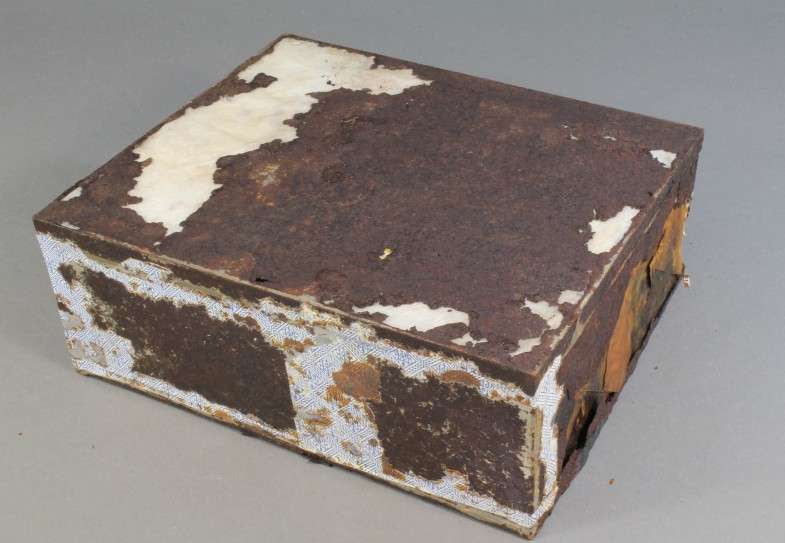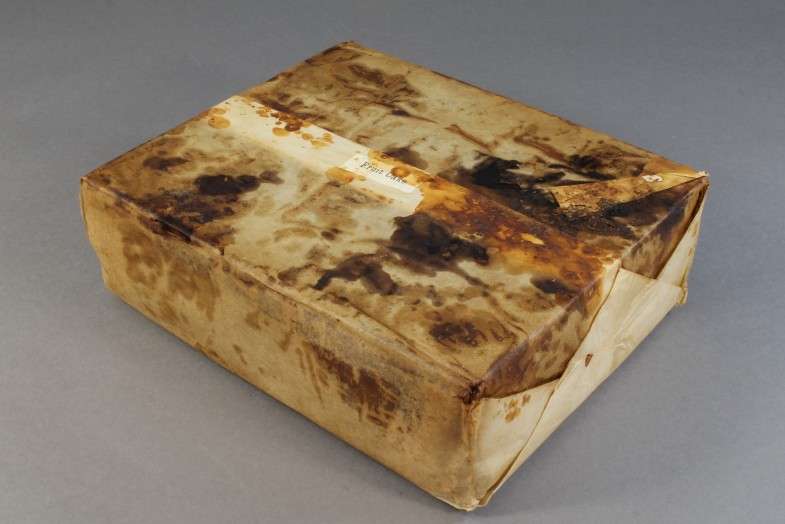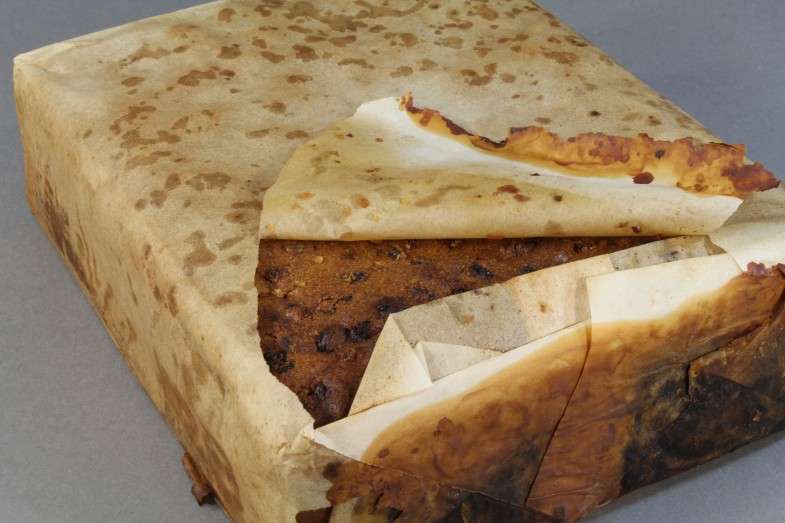100-year-old fruit cake among the artefacts from Cape Adare

Made by Huntley & Palmers, the fruit cake is still wrapped in paper and encased in the remains of a tin-plated iron alloy tin.
The cake probably dates to the Cape Adare-based Northern Party of Scott's Terra Nova expedition (1910 – 1913) as it has been documented that Scott took this particular brand of cake with him at that time.
Although the tin was in poor condition, the cake itself looked and smelt (almost) edible.
Conservation treatment involved rust removal, chemical stabilisation and coating of the tin remnants. Deacidification of the tin label and some physical repair to the torn paper wrapper and tin label was also carried out. The cake itself was in excellent condition.
Programme Manager-Artefacts Lizzie Meek said "With just two weeks to go on the conservation of the Cape Adare artefacts, finding such a perfectly preserved fruitcake in amongst the last handful of unidentified and severely corroded tins was quite a surprise. It's an ideal high-energy food for Antarctic conditions, and is still a favourite item on modern trips to the Ice."
Since May 2016, a team of four conservators have been working in the Canterbury Museum lab on the conservation of Antarctic artefacts from Cape Adare. The team recently finished the large project in July this year, conserving almost 1500 artefacts.

The Trust is now planning to begin the conservation work on the buildings at Cape Adare. The huts were built by Norwegian Carsten Borchgrevink's expedition in 1899 and later used by Captain Scott's party in 1911. The buildings were the first in Antarctica and are the only examples left of humanity's first building on any continent.
The permit the Trust was granted to collect the artefacts stipulates that all of the items must be returned to the site following conservation, in accordance with the site's status as an Antarctic Specially Protected Area (ASPA). This will happen once the huts themselves have been restored.
The Trust is very grateful for the support it receives from its funders, Norwegian Government, Canterbury Museum for its facilities and logistical support from Antarctica New Zealand to get the artefacts out of and back to Cape Adare.

Provided by Antarctic Heritage Trust

















